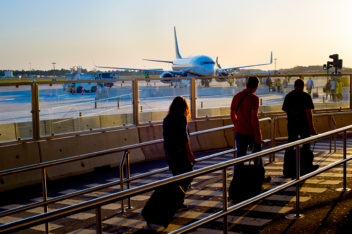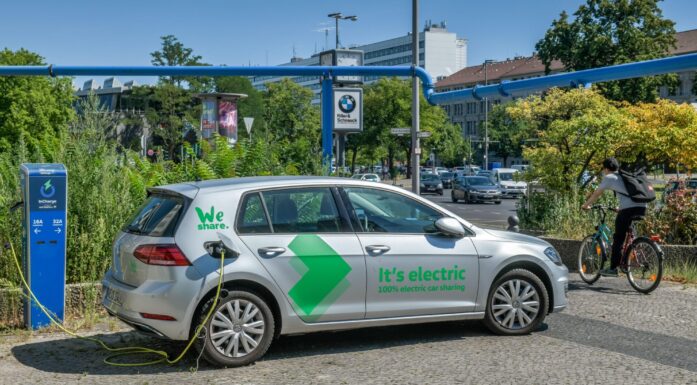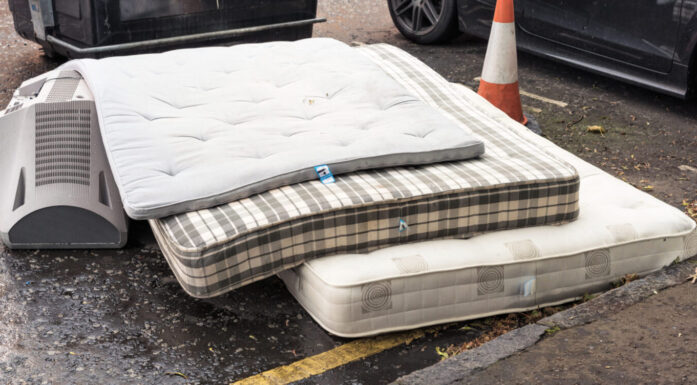Consumer choices for the climate
The gift-giving season is upon us, and perhaps you’re wondering how to give gifts that won’t wreck the climate. Help is on the way.
A new study by Norwegian researchers describes how individual consumers can make conscious choices that are climate friendly. The researchers, led by Richard Wood from the Norwegian University of Science and Technology (NTNU), looked at the potential of Norwegian households to do their part to mitigate climate change and found there’s room for optimism.
Their paper, “Climate change mitigation potential of Norwegian households and the rebound effect,” with Eivind Lekve Bjelle as first author, was published in the Journal of Cleaner Production.
- You might also like: Helping EU cities and regions cut carbon emissions
Government can’t do it alone
US President Donald Trump’s decision to pull the United States out of the Paris Climate Agreement notwithstanding, most governments are working to find ways to meet their pledges to keep global warming below a target of 2 degrees C.

The American President, Donald J. Trump, may have pulled the US out of the Paris Climate Agreement, but the rest of the world is committed to taking action to cut carbon emissions. NTNU researchers wanted to see how Norwegian consumer behaviour could affect the country’s efforts to meet its climate commitments. Photo illustration: Colourbox
Shifting away from fossil fuels, implementing efficiency measures and a host of other large-scale actions have to be taken by governments and industry to meet that goal — but more and more research shows that government action simply won’t be enough, Wood, Bjelle and their co-author Kjartan Steen-Olsen say.
The trio, all from NTNU’s Industrial Ecology Programme, undertook an analysis to see what Norwegian consumers could do to help make that 2-degree goal a reality.
What they found was that consumers can make deep cuts in their carbon footprints by making wise choices. They can carpool, cut back on meat in their diets, or ditch their cars and take the bus, as just three of 34 different actions the researchers evaluated. Indeed, a strong application of most of these changes enabled consumers to initially cut their carbon footprints by as much as 58 per cent.
“For me the most important take-home message is that Norwegian households can significantly lower their carbon footprint by actively changing their pattern of consumption,” Bjelle said.
- You might also like: Food waste recycling is not always the best idea
The irony of efficiency
But there’s a catch: consumers face a potential pitfall after they invest in highly efficient goods or make behavioural changes so they lower their carbon emissions.
For example, if consumers cut back on the amount they drive, and spend less money on other car expenses, that’s good for the planet. Almost certainly, they will also find themselves with a little extra cash in their pockets.

It’s tempting to take an exotic trip involving air travel if you find yourself with a little extra cash in your pocket. But that’s the worst thing you can do for the environment. Photo: Colourbox
That’s where the trap lies, says Steen-Olsen.
“When households take climate actions to reduce emissions, they typically also save money,” he said. “This money is often spent on discretionary items with relatively high climate impacts and the net emissions savings will be reduced.”
This secondary effect is called the rebound effect, and can reduce the savings from the initial emission savings.
In other words, consumers who took reasonable measures to cut their carbon footprints by a substantial amount — and achieved that 58 per cent reduction — could reduce their carbon footprint cuts to just 24-35 per cent if they spend the money they save on an average mix of discretionary purchases.
- You might also like: Save the planet? Stop eating meat.
A positive force
The researchers chose Norway as their subject partly for obvious reasons (the university is in Norway, after all) but also because it is a relatively affluent country that also has a fairly large per capita carbon footprint. But as an affluent country, Norwegians can also afford to make the purchases and investments needed to shift to a greener, lower carbon economy, Bjelle said.
Consumers can be a positive force, Bjelle says, by buying more efficient products, or products that have a lower carbon footprint overall.
“By taking a more active role in lowering their carbon footprint, consumers can drive changes in production, which will lead to further carbon footprint reductions from environmentally beneficial changes in the supply chain,” he said.
Cut back on flights, buy durable goods

Eliminating food waste can save money and cut greenhouse gas emissions. The researchers found that cutting food waste could save consumers as much as NOK 17000 per year and save 1020 kilogrammes of CO2 equivalents. Photo: Colourbox
Then it’s a matter of being a smart consumer with purchases, the researchers say. Cutting back on meat consumption and air travel, and making changes at home, such as eliminating food waste or washing clothes less and at a cooler temperature are all actions that can make a difference.
When purchasing goods, aim for those that are durable, that can be repaired, or clothing and furniture that will last for a long time (and thus might cost more) are all good choices when it comes to the climate, they say.
“Consumers can focus on purchasing ‘better’ goods rather than necessarily less,” Wood said. “Consumers should aim for purchases of goods and services that improve their quality of life, rather than material possessions.”
Norwegian consumers are in an excellent position to show how consumer actions can lead to lower carbon footprints, the researchers observed.
“I believe that Norway should be a role model on this, to lead the way towards a lifestyle associated with a lower carbon footprint,” Bjelle said.
Reference: Climate change mitigation potential of Norwegian households and the rebound effect.Journal of Cleaner Prodution, 2018, 172 208-217. DOI:10.1016/j.jclepro.2017.10.089





